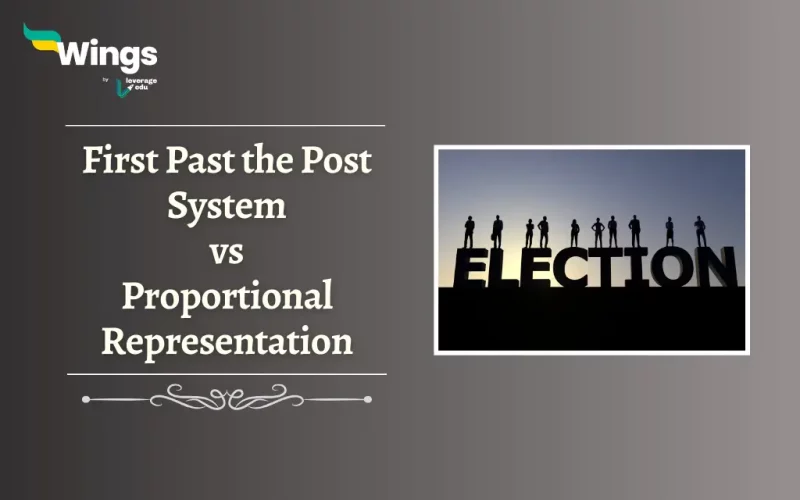The First Past the Post System and the Proportional Representation are both ways to elect members to the Parliament. The First Past the Post System(FPTP) or territorial representation is used by the Lok Sabha. Moreover, in this system, the candidate with the highest number of votes in each constituency is victorious. On the other hand, Proportional Representation(PR) is used by the Rajya Sabha in electing its members. Additionally, distribute seats based on the overall percentage of votes a party receives. Read on to learn more about the difference between the First Past the Post System vs Proportional Representation as well as their Pros and Cons.
Difference between the First Past the Post System and Proportional Representation
Furthermore, here is the difference between both:
| First Past the Post System vs Proportional Representation | ||
| Feature | First Past the Post System | Proportional Representation |
| Principle | The candidate with the most votes in a constituency wins the seat. | The Seats are allocated to parties in proportion to the total votes they receive. |
| Representation | This can lead to a strong government with a clear majority. Moreover, it is often characterized by a single-party rule. | This tends to result in coalition governments, with multiple parties sharing power. |
| Voter Choice | Voters typically choose a candidate rather than a party. | Voters can vote for a party, which then determines the candidates who get elected. |
| Minority Representation | Often leads to underrepresentation of smaller parties and minorities. | Provides better representation for smaller parties and diverse viewpoints. |
| Campaign Focus | Candidates tend to focus on specific constituencies where they have a chance of winning. | More national-level campaigning as every vote counts towards party representation. |
| Political Stability | This often results in stable governments due to clear majorities. | Coalition governments can be less stable, hence depending on the cooperation of parties. |
| Examples | Used in Lok Sabha elections. | Used in some state legislative assemblies like Kerala, Tamil Nadu, and others. |
Pros and Cons of the First Past the Post System
The Pros of FPTP are:
- Simplicity for voters and ballot counting.
- This often leads to decisive and majority governments.
- There is direct accountability of elected representatives to their constituencies.
The Cons of FPTP are:
- There is disproportionate representation, with smaller parties and diverse viewpoints often marginalized.
- Wasted votes for losing candidates.
- A tendency towards two-party dominance in some cases.
Also Read: Representation of People’s Act
Pros and Cons of Proportional Representation
The Pros of PR are:
- There is a more accurate reflection of the popular vote.
- Moreover, a better representation of smaller parties and diverse interests.
- Encourages cooperation and compromise between parties.
The Cons of PR:
- Complexity for voters in understanding party lists and proportional allocations.
- In addition, there is potential for unstable coalition governments.
- Reduced direct accountability of representatives to specific geographical areas.
Related Blogs
Lastly, we hope you liked our blog and gained an understanding of the First Past the Post System vs Proportional Representation. Moreover, you may even read more blogs and empower yourself with knowledge regarding Civics and Polity!
 One app for all your study abroad needs
One app for all your study abroad needs













